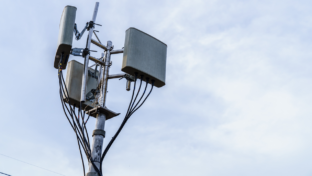
This course covers the comprehensive aspects of RF transceiver design, with a special focus on passive components and impedance matching. It provides a deep understanding of high-frequency design challenges, such as circuit dimension, phase effects, and parasitic effects. The course also explains the difference between distributed and lumped elements at high frequencies, the concept of transmission lines, reflection coefficient, and return loss. For example, it illustrates how a quarter-wave transformer can be used to match input impedance with a real load. The course further delves into the Richard transformation, strip line, micro strip line, S parameters, Smith chart, quality factor, power transfer, tank circuit, series and parallel RLC networks, and different methods of impedance matching. It also discusses the principles of impedance matching, tapped capacitor resonators, tapped inductor capacitors, double tap resonators, and the importance of understanding passive networks in RF transceiver design. Lastly, the course covers the fundamental aspects of inductors in RF transceiver design, the theory behind inductance, high-frequency effects on inductors, modeling of spiral inductors, on-chip inductors, transformers, and the use of pattern ground shields. This course has been developed by Prof. Darshak Bhatt from IIT Roorkee for NPTEL. It is now accessible through Ansys Innovation Space courtesy of the partnership between Ansys and NPTEL, under the CC BY-SA license. For more details, visit https://nptel.ac.in/courses/108107379.
-
Cost: FREE
- Course Duration: 4-6 HOURS
- Skill Level: Intermediate
- Skills Gained: Passive components, impedance matching, distributed and lumped elements
No reviews available for this learning resource.









